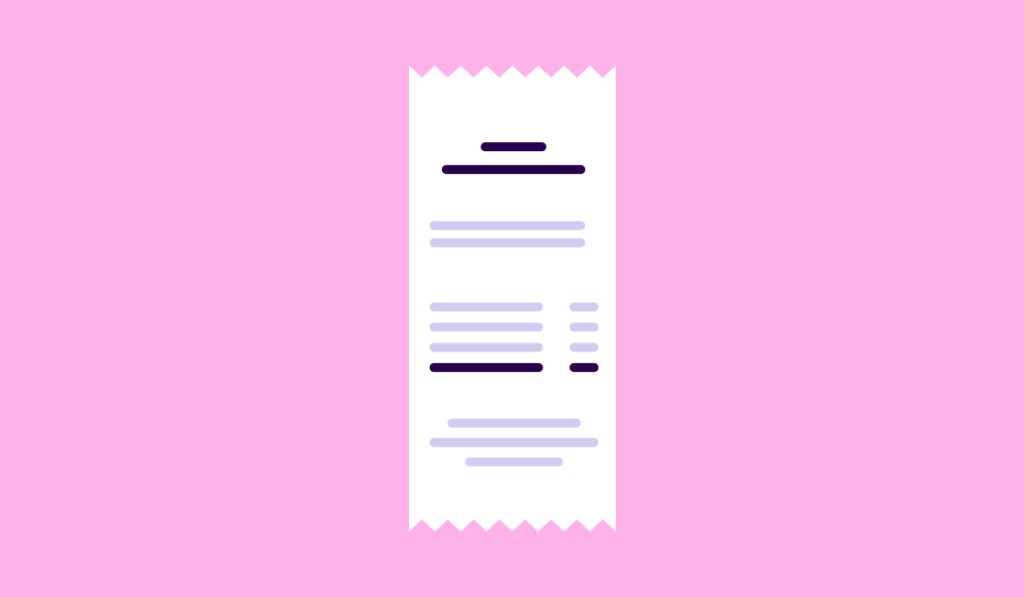Managing incoming invoices is part of everyday life for many self-employed people and is an important part of their own accounting. However, it is essential that all invoices received are complete and contain all the necessary components in order to be officially logged as incoming invoices because only right invoices can be used for tax deductions in Germany.
In this article you will learn what should be included on any incoming invoice, how long you should keep your receipts and how you can reclaim the VAT you have paid.
What is an incoming invoice?
An incoming invoice is any invoice that is issued to you. This can be the receipt for a restaurant visit with a client or the invoice for a new business expense, like a computer or phone.
On the other side are your outgoing invoices, which you issue to your customers for the goods or services you deliver.
Incoming invoices and VAT
If an incoming invoice includes VAT (value-added tax), you can reclaim this cost on your VAT return. However, this is only possible if you pay VAT yourself and have not registered as a small business.
🔖 The small business classification exempts some self-employed people from paying and reporting VAT, as long as their annual income does not exceed 22,000 EUR in their first year of self-employment and 50,000 EUR in their second year.
If this does not apply to you, you must show VAT on your outgoing invoices and pay it to the tax office monthly or quarterly, depending on what your local tax office decides is best for your circumstances.
The good thing about this is that you can also reclaim the VAT you have paid on any business expenses. You simply enter the total amount VAT you have paid in the advance VAT return. Of course, you can’t just claim to have incurred an expenditure – you must be able to prove it with an invoice.
Incoming invoices must be stored for 10 years
You are legally obliged to keep your receipts for a period of 10 years. This way, you can easily prove to the tax authorities the VAT you have paid and reclaimed, even in the event of any queries at a later date.
Missing invoices can have consequences for you and your business. And incorrect incoming invoices where, for example, some mandatory information has not been included, can lead to additional payments to the Finanzamt (tax office).
Therefore, you should always check both your own invoices, as well as all incoming invoices, to ensure they are complete and compliant.
💡 Tip from Accountable: In our app you can simply take a photo of your incoming invoices and register a payment. This way, you will have all your receipts in one place, even years later.
What must be included on an incoming invoice to deduct it
In order for an invoice to be official and be able to offer you any advantages come VAT time, it must contain certain mandatory information.
These elements include:
- The full name and address of the invoicing party and the recipient
- A unique invoice number
- An invoice issuing date
- The quantity and a description of the goods or services supplied
- The time of delivery or the period of service
- The sum of the invoice
- The applicable VAT rate (standard VAT rate 19%, reduced VAT rate 7%)
- Any applicable discounts
- The valid tax number (Steuernummer) or VAT identification number of the invoicing party and the recipient. With our app you can upload your incoming invoices as a photo or enter your expenses manually. Then the correct VAT rate will be calculated for you automatically.
Tips for documenting incoming invoices
Anyone who has to submit a monthly or quarterly VAT return has to do some regular accounting. This takes time – and a little stress – if, for example, an invoice can no longer be traced.
You can easily prevent this problem by writing down the reason for the purchase on the invoice itself, immediately after receiving it. This not only helps to give you a good overview of your operating expenses but also allows you to clearly prove your costs to the tax office.
One exception is expenses that cannot be easily divided into personal or professional use. This is often the case, for example, with travel expenses or the use of a telephone for private and business purposes.
In this case, you must divide the total cost into deductible and non-deductible amounts and, at best, provide a clear breakdown.
The amount of tax you can reclaim will vary depending on the amount of money you spend and your area of work. If you are not sure about an incoming invoice, you can easily use the expenses search tool on our website. Here you can type in the expense and find out with just one click whether you can deduct it as a business expense.
💡 Tip from Accountable: When you upload invoices in Accountable, you can also note on each incoming invoice what percentage of the total amount falls under professional use.
